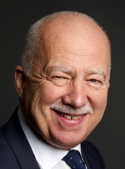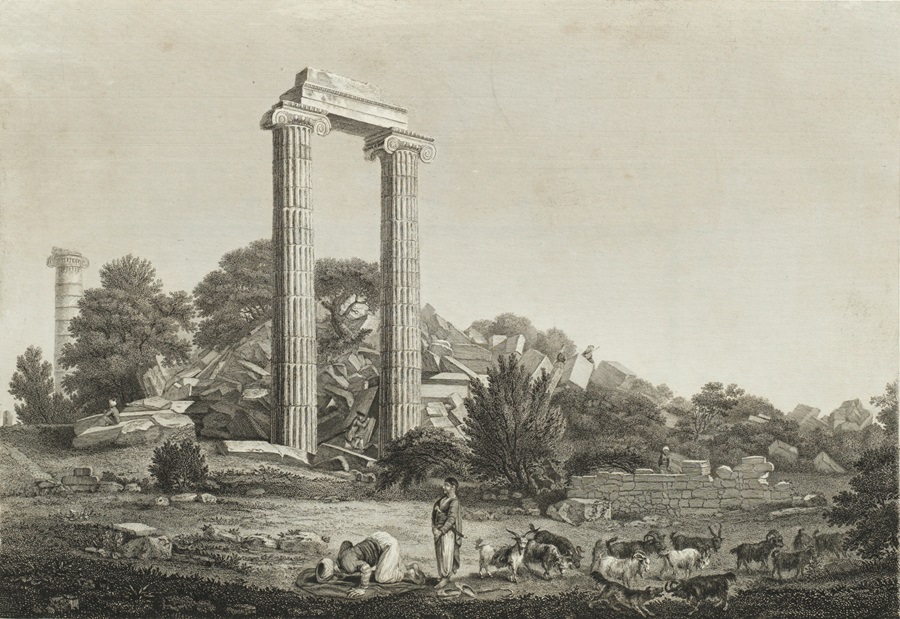
The Interviewees

Interview with Philip Mansel, September 2024
1- The Grand-tour was an intellectual journey of usually 2 or 3 years for people of means whose main purpose was to visit classical ruins, taking people first to Italy and later to the Levant, after the conditions got safer in the 18th and 19th centuries. Can we put a rough start date on this, or the first ‘meaningful account’ by a British aristocrat, and can you argue that the tradition hasn’t fully died out and perhaps consider that some of today’s ‘cruise and lectures’ tourists are doing something similar?
I think it is completely different, in the past they would spend one or two years and modern cruises are just a few days. And they always had interpreters, they interfaced far more with the local inhabitants than people do now. There were always pilgrims to Jerusalem from the end of the Roman Empire and this came and went according to political and commercial conditions. But with the establishment of the Ottoman Empire and especially after 1516 (when the Ottoman Empire conquered Syria and Egypt), I believe that law and order and travel were easier, supported by capitulations in the 16th century with France and England and the Netherlands and always previously with Venice. So it grows after that and it grows even more after 1830 with the arrival of steam ships and after 1850 with railways.
2- Was the Grand-tour experience a mainly British / French endeavour, countries with a similar class system (pre-revolution) that expected its men of means to go on this cultural pilgrimage to open their minds? Did this usually go with a degree of classics based education so these travellers knew the works of Homer etc. or was there also a religious dimension with aspects such as the 7 churches of the Apocalypse?
Classics were crucial and I would say at least 50% of the travellers in the Middle East were driven above all by the love of antiquities and a desire to see the ruins, the remains of Greece and Rome. And the Bible and Christianity were far less important as influences and so far in my research it does seem to me that it is mainly an English and French phenomenon, with English travellers such as George Sands going to Egypt and Syria in the early 17th century. But I am sure research will show there were more Germans and Dutch than I know. And of course there were always Venetians. But they tend to be slightly less adventurous in my opinion, going mainly for trade or where their ambassadors and consuls were.
3- Was the Grand-tour also a money earner beyond local guides for hard to reach places such as Palmyra and the foreigners resident in those lands such as Consuls who could charge room boards, arrange horses / guides etc. and obtain commission, supplementing their meagre income? Did any of the large number of Consuls / Ambassadors posted in that region leave behind diaries of their time and experiences in their somewhat exotic postings that are historically relevant today?
Many consuls and ambassadors left diaries and memoirs and travel books. I will make a list of them one day. Travellers were motivated by obtaining antiquities, to write books and increase their own prestige and celebrity.
While local consuls and ambassadors were interested in keeping their jobs and a lot of consuls and ambassadors also traded in wheat and other things, indeed the French ambassador in Constantinople was often primarily there to make money. The British ambassador was paid by the Levant Company until the early 19th century, proof of the importance of his commercial role.
4- Could we class as Grand-tourists posted non-diplomatic officials who wrote accurate books such as the Russells of Aleppo or the early Levant chaplains such as Edward Pococke of Constantinople or later Francis Arundell of Smyrna. Or is it best to separate these writings so as not to conflate this cultural interaction which by nature would have gone deeper as these individuals stayed in one place, had a knowledge of local languages and ways and thus created deeper connections and insights?
I don’t think there is a particular pattern; the perceptions, insights and knowledge of localities depended on the quality of the person, not necessarily on his job as consul or ambassador, or whether he was a traveller or a merchant, though of course some consuls were remarkable. Because they were there longer than ambassadors and often less convinced of their own importance, they produced better books such as Paul Rycaut in Smyrna (see ‘An English Consul in Turkey, 1667-1678’).
5- There are many panoramas of Constantinople and to a lesser extent other places in the Ottoman Empire where the Grand tourists went. Some have recently been identified as having been painted by Jan van der Steen, attached to the Swedish Embassy. Is there more research to be done on these artists and are there still paintings yet to be attributed?
Yes there is a lot of research to be done. Briony Llewellyn (1952-2023) and I were starting to plan an exhibition on Luigi Mayer, who worked with the British Embassy, but there is no catalogue raisonné (critical catalogue) of his works. And these panoramas coming on to the market the whole time in London and Paris are often not attributed. Though for Jan van der Steen we have attribution, and the outlines of his life have been established by Brian Taylor. And there are many other similar cases. Often the artists in Istanbul and the Ottoman Empire were not very famous and not outstandingly brilliant. They are less well known and therefore it is more difficult to learn about their lives. But it will come and hopefully one day there will be a major exhibition in both London and Istanbul on the Grand Tour in the Ottoman Empire. There have already been fantastic exhibitions at Ömer Koç’s gallery Mesher and elsewhere simply on views of Istanbul. That subject alone, just views of one city, is enough to produce an exhibition and in my opinion there were more panoramas of Istanbul than of any other city in Europe, even Venice or Rome.
6- One of the best accounts of the Ottoman Empire I think in your estimation is by Chevalier D’Arvieux, who was the French Consul in many places in the Levant, including Aleppo. He knew many languages. Clearly he was an intellectual but do you think this and similar tomes were printed also as guides to how the French Government should conduct itself in this alien environment to increase trade and diplomatic potential?
Lots of books like D’Arvieux and also Ignatius Mouradgea d’Ohsson with his ‘Tableau Général de l’Empire Othoman’ a century later and Choiseul-Gouffier are not really telling the French Government what to do; it already had its own well defined programmes and ambitions. They try to give the author’s experiences in the Ottoman Empire, establish him or her as a good writer and describe the subject whether it is Aleppo, Smyrna or the power structure of the Empire.
7- At what stage did the interest of the Grand tourists start to widen beyond classical sites and as ancient Egypt to include Islamic civilisations, including Ottoman structures and culture? Do you think there is still a degree of cultural bias today as we consider the Greco-Roman world to be part of our own Western cultures, and Islamic civilisations as somewhat alien and less relevant to our origins?
I think there is much less prejudice against Islam and Ottoman history now than say 40 years ago, far far less and far greater knowledge. And I think there were always other factors and in my opinion most travellers had a political subtext: they are looking at the Ottoman Empire, they are wondering about its future, they are wondering what England, France or Venice can take for itself. They are looking for weak points, for strong points, they are trying to balance the power and weakness of the Empire and wondering what will happen next, because the Ottoman Empire was unusual compared to say Russia or Spain in that it was composed of different peoples who retained their identity, so there was always the possibility that for example maybe Armenians, Bulgarians or Greeks would one day try to recover political freedom.
8- Perhaps the general level of interest in the outside world of educated elite young men in the Ottoman world was restricted, or frowned upon by officialdom. So there was no equivalent tradition. However Muslim merchants and perhaps exiles did exist in small numbers in Western centres such as Venice? Do we know of any writings from these people?
Well Evliya Çelebi travelled through Europe and he wrote about it but on a fairly superficial level. There were very few Muslim Ottomans in Venice, there for trade more than curiosity, and it was difficult for them to travel in France for example, where Muslim worship could only take place in private houses. There are traveller accounts by Ottoman ambassadors from the 18th century and there were a few mainly Christian Ottomans in Amsterdam and in London, for example founding the first cafés in Marseilles, Paris, Amsterdam and London.
9- The Society of Dilettanti was founded in 1734 in London by noblemen and scholars that sponsored the study of ancient Greek and Roman art, many of whom had been on the Grand Tour and the Society still exists today and makes donations to the British Schools in Rome and Athens. Just how important is / was this Society in increasing the knowledge of both Classical worlds and the Ottoman Empire and its peoples?
Well they sponsored an expedition to Ionia in 1764, on which there was recently a wonderful exhibition in the Soane museum in London in 2021 called The Romance of Ruins, the Search for Ancient Ionia, but most travellers to the Ottoman Empire did not have the help of the Society of Dilettanti, there were hundreds of people going there every year. The Society of Dilettanti was specifically about classical antiquities and publishing them in illustrated volumes so it is really quite limited in impact.
10- There were small English speaking communities established in places such as Florence in the 19th century that survived with its high life for a few generations. Were these ‘expatriate’ communes a direct result of the Grand Tour with any merchant opportunities offered there being secondary?
I think with the Grand Tour with 2 or 3 years abroad when young is something different from communities living in Florence or Venice or Lisbon or Istanbul, who were often there for many years. They went for personal reasons to save money, to make money, to have a healthy climate, to get away from England; I think it is something different: resident communities are different from travellers.
11- Are you planning to write a book on this subject in the future?
Yes, I am planning to do a book on the Grand Tour in the Ottoman Empire: travellers, their accounts, above all the political aspect, their interactions with Ottoman officials, and showing how it changes over the years, it is not static, growing in number in the 18th century and expanding enormously after 1792, when the wars of the French Republic and Empire make Italy more difficult for foreigners to travel to. Above all seeing the interaction with Ottomans and then Ottoman travellers themselves in their own Empire, travelling craftsmen, architects, merchants and officials. Also the reverse travels of objects and animals, such as horses from Aleppo and the Syrian desert to Germany, England and France.
Interview conducted by Craig Encer - read interview from 2011.

